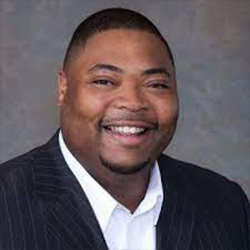Written by: Terri Seydel
Would you like to change any of the decisions you made as a teenager? We’d probably all like to turn the clock back on a few of our choices. But for some young people, choices can mean the difference between life and death.
Carroll Hill (left in photo) grew up in South Central Los Angeles during a time when gangs were dominating many areas of the city. Violence and fear were a constant presence and drive-by shootings were a common occurrence. In fact, people were often murdered simply for wearing the ‘wrong’ color clothing.
Living through this era gave Carroll a unique vantage point of how decisions can set the trajectory of a person’s life. Ultimately, she used her observations during those impressionable years to create a professional and volunteer career dedicated to empowering young people and helping them understand the importance of their decisions.
Inspiration to Volunteer from Life’s Experience
Beginning in her youth, Carroll had a passion for education and stuck with it even though she had to endure a 2-hour bus ride to a high school in Woodland Hills, California. Each day as she entered the school building, she would see two unimaginable things. On the left side of the foyer was a sign with names of all the students that had committed suicide the previous week and on the right side was a sign with all the names of all the students that had been murdered the previous week.
“Each day began with sadness, I hated going through that door. It was traumatic!”
This weighed heavily on Carroll, and she felt compelled to try and make a positive difference in her community. With encouragement from her grandmother, she sought out volunteer opportunities to help the families that were suffering these unthinkable losses.
So, on the weekends, she would take the same two-hour ride to volunteer her time doing anything that might help the victims’ families. A friend also introduced her to the Special Olympics where volunteer efforts were more about encouragement and celebrating people’s accomplishments. It was during all these efforts that Carroll began to understand all the benefits of volunteering.
Making a Positive Impact Through Community Service
Carroll continued volunteer work through college and into her early adult years when she moved to Richmond, Virginia. Crime and murder rates were at an all-time high. In one particular drive-by shooting incident, she and her family were able to take shelter and remain safe but her home, as well as many neighbors’ homes, were severely damaged. This event pulled Carroll into active community service with the goal to affect change and improve her community culture. Through this work, she started to understand why teens were drawn into gang life, which always led to a series of decisions that would inevitably include violence, drugs, and many forms of abuse.
Her commitment and passion to help the youth in her community began to make a significant difference and by 1998, Richmond was known as one of the top 10 cities to raise a family.
Sharing Positive Experiences through Community Outreach
Eventually, Carroll moved back to Los Angeles and began working for the City of Los Angeles Parks and Recreation division. With her community connections and all that she had learned, Carroll was able to make a huge impact on the lives of young gang members in that community. She taught them to use the creative process to make intentional decisions and knowingly choose between positive or negative outcomes.
Understanding that many of these youth would never see the world outside the 3-block radius of where they lived, Carroll created opportunities for the youth to experience different aspects of the world outside their immediate community. She wanted them to see that they had many more options available to them, other than being a gang member.
To help them understand this firsthand, she developed a program in which they could earn credits for field trips by volunteering their time and doing community service. Through this experience, they learned to work together and see positive outcomes of their volunteer efforts, and in turn, experience other places and cultural events through the earned field trips.
Carroll mentioned one gang member, named Jesse, who had incredible artistic talent. At one of their events, a Hollywood producer bought one of Jesse’s paintings and encouraged him to do more with his incredible talent. This single positive interaction changed the trajectory of Jesse’s life. He chose to leave the gang to pursue an artistic career. Carroll shared that Jesse now has a successful art career, is thriving, and a great example of how a life can be changed through positive interactions.
Incredibly, she also shared stories of successful collaboration with gang leaders who didn’t want their grandchildren to live the same lifestyle. These leaders made sure she had safe and open interactions with many of the youth. Their mutual respect helped pave the way for positive improvements in the community and, over time, the crime rates began to drop significantly.
Carroll is now retired from a career in gang prevention and intervention, she is currently volunteering as a ‘Griot’ (Keeper of the stories) at the National Museum of African American Music. As a Griot and tour guide, Carroll helps visitors immerse themselves in learning so that they emerge inspired to use the creative process to help make positive decisions.
For anyone who is considering volunteering their time, Carroll encourages them to find their own passion and support that interest. In her words:
“Be inspired, excited, and volunteer with enthusiasm.”
From the author: Carroll is one of the most inspiring people I’ve ever met. Her courage, passion, and authenticity are not anything I will soon forget. Even through her own struggles, she continued her journey of caring for our youth. I can only hope that my volunteer work makes a fraction of a difference in our world.



